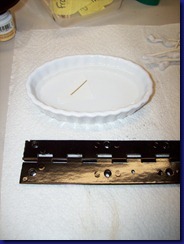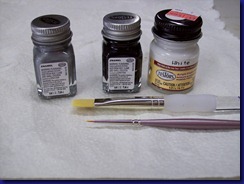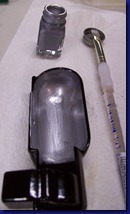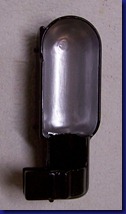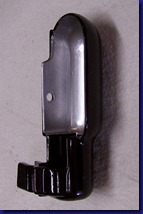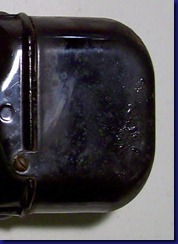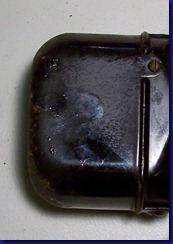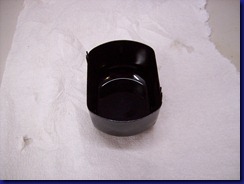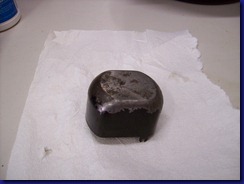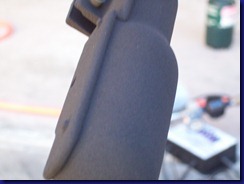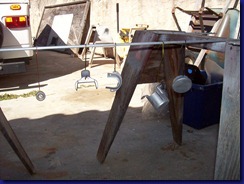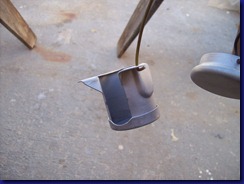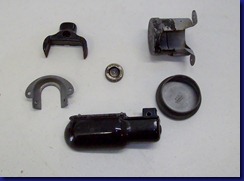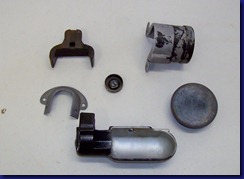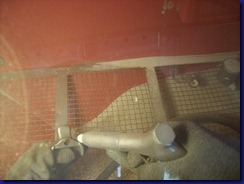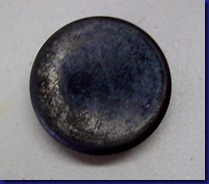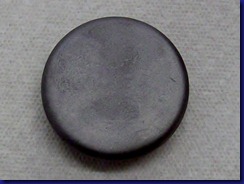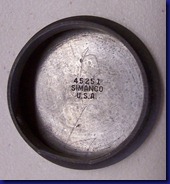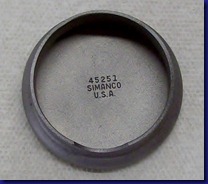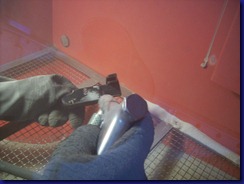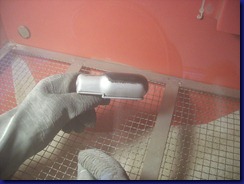First let me start by saying I learned a LOT taking these two shafts out. I learned 1) that the names of these two bars/shafts are so similar that I was getting them confused, 2) how NOT to take out the shafts, and 3) its much easier to take out the second shaft after learning 1 and 2!
Here is a picture of what I started with: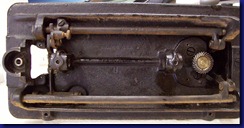
Lesson #1: The top shaft is called the Feed Lifting Rock Shaft and the bottom shaft is called the Feed Rock Shaft. From this point forward I’m going to abbreviate them FLRS and FRS, or Top Bar and Bottom Bar, because that’s what I ended up calling them in my head to keep them straight because it took me way too long looking at the Adjuster’s Manual for me to figure out that they even had different names. For a while I was calling them both “rocker bars” and then thoughts of ‘80’s Big Hair bands flashed through my head, and then……well, I digress. In the end I disregarded what the Adjuster’s Manual said and just dove in because I was getting too confused.
I first I took LOTS of pictures, because I’m sure I’ll forget something along the way and putting it back together might be a bear. However, I won’t bore you with the 20+ photos I took from every angle and I’ll just show you the pertinent ones along the way.
My first goal was taking off the feed lifting crank from the FLRS, or top bar. A front and rear picture of this gizmo is shown below.
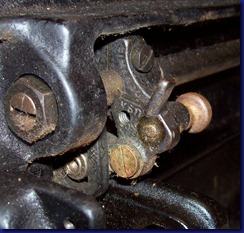
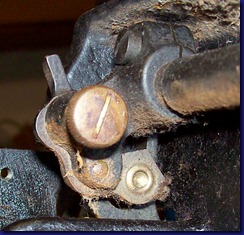
I began by removing the ‘feed lifting rock shaft crank clamping screw’ and then attempted to loosen the lifting crank thumbscrew, but it wouldn’t budge. After trying several other screws in the area, and discovering they were all locked up due to rust or old grease, I sprayed Break Away on each and every joint and screw under the machine. I suppose one could also use WD-40 or something similar, but this happens to be what I had on hand.
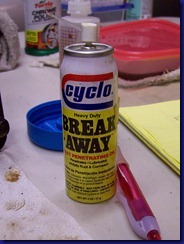
After several applications over a period of a few hours I finally was able to loosen the thumb screw. Then I removed the screw on the feed lifting crank itself and with a little wiggling took off the crank assembly (see below). For clarity, I the tag LHS means the side that can be seen when looking at the machine from the front end, or left side of machine. RHS means view from right hand side, or balance wheel side of machine.
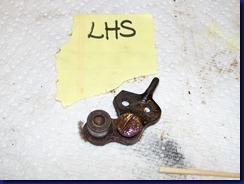
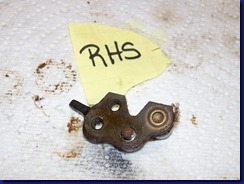
Then came the real fun – remove the FLRS or top bar. I started by removing the center end screws/nuts from both the front and rear of the top bar. Here is a picture before the disassembly process showing the center screw/nut on the top and the connecting rod screw below it.
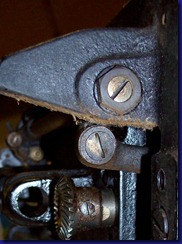
At this point the top bar is attached to the machine only by the connecting rod. This means the rod is flopping around attached only by one screw. That doesn’t allow one much leverage to remove that dang connecting rod screw, which doesn’t budge for me (of course).
After busting a knuckle open trying alternatives, I figured out the only way to get any leverage is to reconnect the bar using the center screws. After reattaching the screws, it was fairly easy to remove the connecting rod screw (big surprise). Then I had to removed the center screws, again, and then the bar was free!
Lesson #2: Remove the connecting rod screw FIRST and the center screw/nuts SECOND.
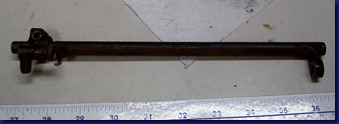
After the top bar was removed, I could slide off the thumb screw part of the feed lifting crank.
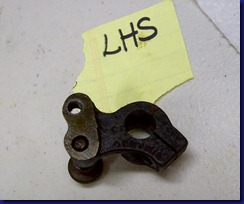
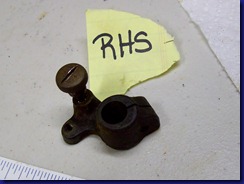
Here is picture under Ms. Rusty without her top bar, or FLRS, or whatever you want to call it 
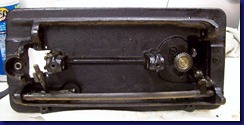
Lesson #3: It took me 2 evenings, or several hours to remove, the top bar, but less than 10 minutes to remove the bottom bar (feed rock shaft).
I started by removed the screw and nut from the feed forked connection rod
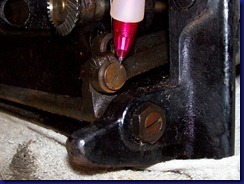
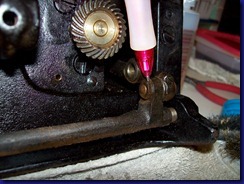
Then I removed the center feed screw/nut. Here is a photo of just the rear center nut removed and both the screw and nut after removal.
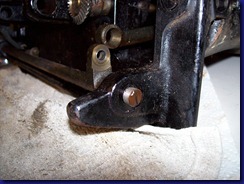
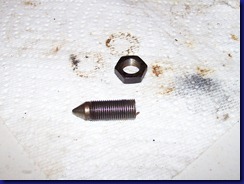
Amazingly the bottom bar just fell out after taking out the front center screw.
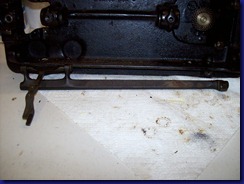
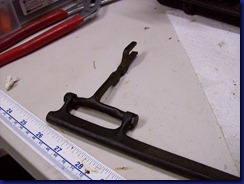
While it was frustrating, and I got one skinned knuckle in the process, I learned a lot taking out the feed bars. I imagine the next steps, taking out the gears and cranks in the head, will be just as much fun. Stay tuned!
![]()
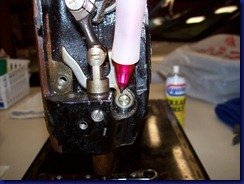
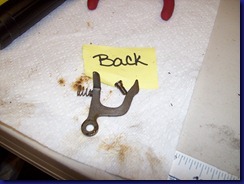

![needle-bar-down-thread-take-up-lever[1] needle-bar-down-thread-take-up-lever[1]](http://lh3.ggpht.com/-eMIAR81gh-o/TjIw6aPrD-I/AAAAAAAAAtw/wJJVlfD0dRk/needle-bar-down-thread-take-up-lever%25255B1%25255D.jpg?imgmax=800)

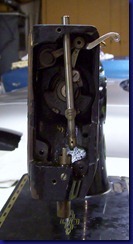
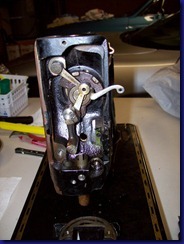
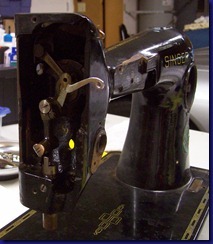
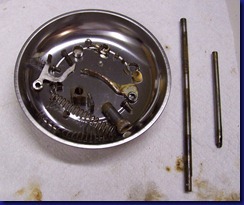
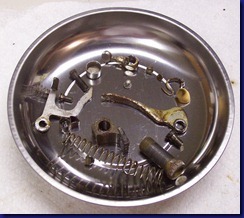


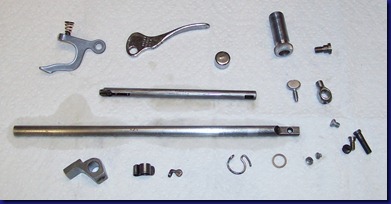

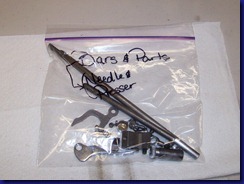
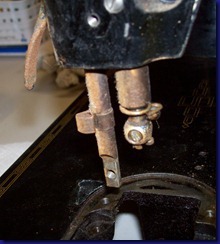
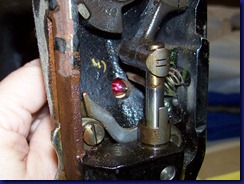
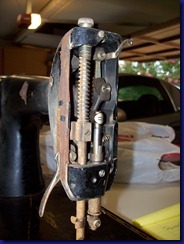
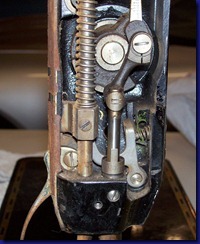
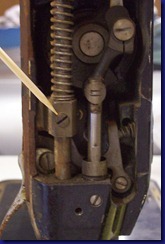
![after kerosene (1)_thumb[4] after kerosene (1)_thumb[4]](http://lh4.ggpht.com/-7PmguqLZUrI/TioohTMcnuI/AAAAAAAAAns/4daGhuNBytI/after%252520kerosene%252520%2525281%252529_thumb%25255B4%25255D_thumb.jpg?imgmax=800)
![painted silver 2_thumb[3] painted silver 2_thumb[3]](http://lh6.ggpht.com/-etHpD3HeiK4/TiooiBRvabI/AAAAAAAAAn0/70TikXzuSQ0/painted%252520silver%2525202_thumb%25255B3%25255D_thumb.jpg?imgmax=800)
![painted silver_thumb[3] painted silver_thumb[3]](http://lh5.ggpht.com/-jEuBn4yhUEg/TiooijOYH-I/AAAAAAAAAn8/BYl8l1lGpKQ/painted%252520silver_thumb%25255B3%25255D_thumb.jpg?imgmax=800)
